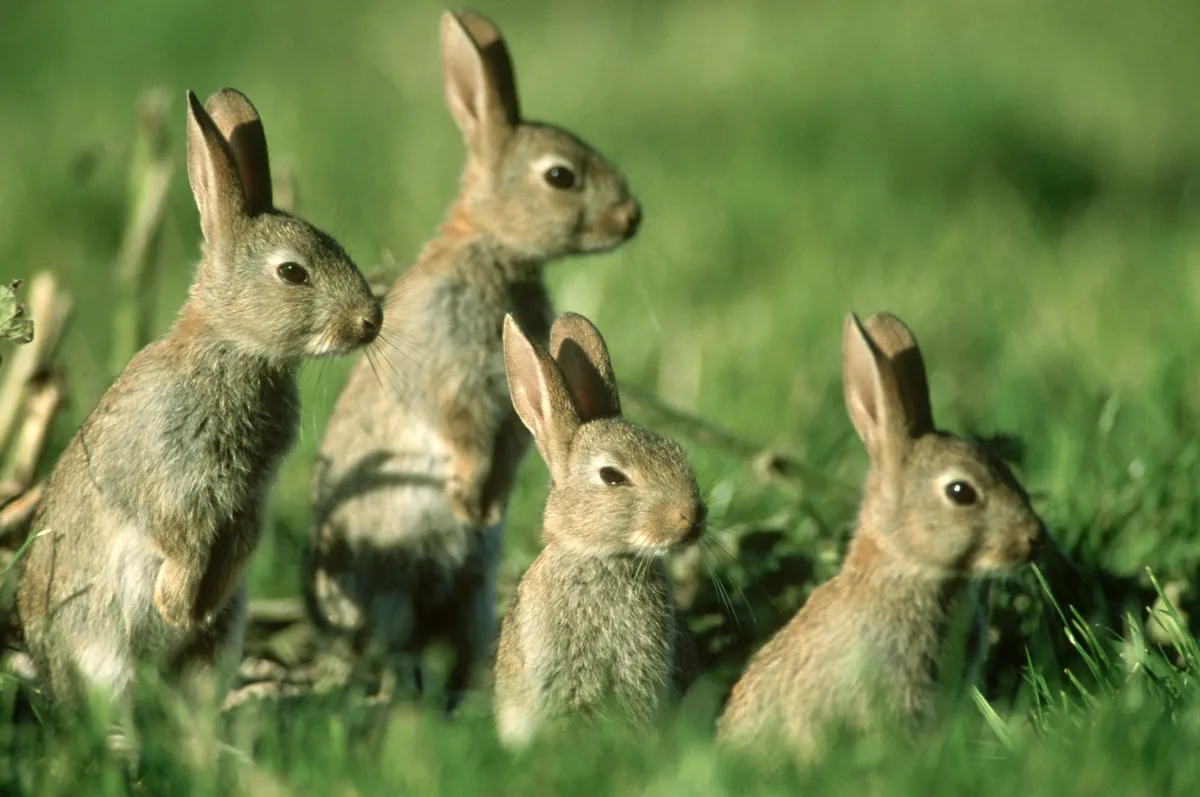Just as beauty is in the eye of the beholder, so some animal characteristics and behaviours seem gross to our eyes. But nature has a purpose for everything and even the weirdest of creatures doing the most stomach-churning of things has its place in the world. Of course, that doesn’t stop us going “Eew”…
11 disgusting animals
Suriname Toad
If you want an example of an eye-popping way to give birth, look no further than this curious amphibian. For a kick off, it doesn’t live exclusively in Suriname and it isn’t a toad, it’s an aquatic frog that lives in pretty much the whole of northwest South America.
That aside, it’s the strange way the Suriname toad raises its offspring that qualifies it to join tthe disgusting animal club. During mating the female’s skin swells and the dozens of fertilised eggs become embedded in her spongy back. Overnight they sink into pockets in her skin leaving her looking like a froggy crumpet.
Similar to other frog species, the young develop into tadpoles, but they don’t emerge from the skin pockets at that stage. They wait until they are fully formed, and then grope their way with spindly fingers to the surface of her skin.
The whole of the mother’s back writhes with froglets heaving themselves up until one by one they burst out of her skin and swim away. The mother is unharmed and heals within a day and the babies get the best start in life, being so mature when they emerge.
This particular talent earned it a place on our weirdest frogs list
Ommatokoita elongata
This unique crustacean, the only species in its genus known to science, lives permanently attached to the eyeball of Greenland Sharks and Pacific Sleeper Sharks.
The female hooks herself on to the shark’s cornea and hangs there more or less for life, feeding on its eye tissue until eventually the fish goes completely blind. As Greenland Sharks are known to live for about 250 years, that’s a long time not seeing.
They live that length of time because they have very slow metabolisms due to the deep, cold waters they inhabit, where prey is not abundant. It is this inhospitable home that has given rise to a theory about the usefulness of Ommatokoita to the shark. It is thought to be luminescent and its glow in the dark waters may attract animal food that the fish can smell and easily catch, but that is unproven.
Caecilians

Considering convenience foods, one African species of this legless amphibian has a bizarre way of feeding its young.
When they are adults Caecilians resemble giant earthworms and, indeed, they live mainly underground feeding on termites and other insects. However, when they are immature, the mother produces a layer of very fatty skin tissue that she allows her offspring to scrape off with their needle-sharp juvenile teeth.
It is a clever and less labour-intensive, but potentially painful, way for her to provide her offspring with plenty of nutrients and fat to help them to grow to adulthood. The mother regenerates her lost skin every three days so she can keep them fed up for a long time. Fed up is probably what she feels like, too, until they are old enough to go off and find some insects.
Rabbits

You hardly think of bunnies as disgusting animals but they do exhibit one yukky behaviour. They routinely eat their poo as soon as they have excreted it. This isn’t just a nasty habit, it’s an important way of getting maximum benefit from the tough, fibrous vegetation they graze on. Processing it twice breaks it down more efficiently and fully releases the nutrition.
That’s not the only reason why some other animals such as elephants, koalas, pandas, hamsters and hedgehogs eat their own or their parents’ faeces. It is so common in the animal kingdom, in fact, that there is a name for it – Coprophagia.
Poo eating is a good way of adults passing on essential gut bacteria to their young to enhance their digestive systems. It is also thought that in some species this practice gives a source of beneficial vitamins B and K that are synthesised by gut bacteria and that the animal wouldn’t otherwise obtain direct from their food.
Dung Beetles

Talking of faeces, who can love the family of beetles that eat, roll, bury or live their lives in poo? Unpalatable as it may seem to us, these little animals provide an invaluable service to the world. They mostly have a very acute sense of smell to search out a dung heap, although some species have found best practice being just to hang around their host’s nether regions and wait for their food to drop.
Despite their lifestyle being a turn off to us humans, their disposal of other animals’ waste helps soil nutrition, disperses seeds and clears the environment of decaying matter that would promote disease and encourage pests that would be harmful to livestock. So the next time you’re on a walk thorough a cow field and you narrowly avoid a big pat full of burrowing dung beetles, don’t pull a face, say thank you.
Sea Cucumber

This marine animal has a spectacularly horrid way of escaping from a predator. When it fears for its life it expels its entire internal organs – intestines, breathing and reproductive parts –out of its anus.
While the predator dives in to feast on the unexpected treat that has just been delivered to it, the sea cucumber finds a hiding place. The sting in the tail – literally – is that along with the organs the cucumber shoots out sticky white threads called Cuvierian tubules that are toxic and swell in size to entrap and strangle the would-be hunter. Its enemy effectively disposed of, the sea cucumber then rests in its place of safety for a month or so to regrow all its innards.
Humans should not rest easy in thinking this is a phenomenon they are unlikely to witness. Sea cucumbers often burrow into sand and if the unwary swimmer in some tropical paradise happens to stand on them, they will likely find their foot coated in sticky goo.
Xenomorph Wasps
A recently discovered wasp species has a horror aspect to its life cycle that Hollywood has emulated. Dolichogenidea xenomorph, identified by a PhD student in Australia, uses an extremely long, needle-like ovipositor to inject its eggs into a specific moth caterpillar that feeds on eucalyptus leaves. When the wasp larvae hatch, they munch their way through the living caterpillar to finally break out when they have eaten their fill. They are the real-life embodiment of the creature in the Alien movie franchise. And that’s not the only new species of wasp to display this charming behaviour. Syntretus perlmani, that lives in Mississippi, USA, lays its eggs in the abdomens of adult fruit flies. There the larvae mature until they can no longer be contained and have to burst the fly open to get out. The strategy of both wasp species is clear – to provide a safe, cosy, nutritious cradle in which their young can thrive. In nature they provide a useful check on an overpopulation of moths and flies. For their hapless victims, though, they bring nothing but death, and not even a quick one. Fruit flies have been observed to live for several hours after the wasp has departed their bodies.
Praying Mantis

Female praying mantis have a particularly disgusting trait when it comes to mating – exhibiting extreme disloyalty if you want to be anthropomorphic. The smaller male mantis approaches a robust female with great caution, using its feelers to soothe and reassure her of his non-aggressive stance.
She allows him to mount her but, as copulation begins, she reaches round and crunches into the male’s head, removing it bite by bite. Eating his head provides her with extra nutrition to make eggs and it doesn’t stop the male from fertilising them. For several hours after decapitation his body clings on, performing its vital function of creating the next generation, driven by a mini-brain in his back end. When the mating is over the female will often eat the rest of her unfortunate, self-sacrificing mate – waste not, want not.
Northern Fulmar

The fluffy pale grey chicks of this subarctic seabird have a rather foul way of protecting themselves that belies their cute and cuddle appearance. If they are approached in the nest by a predator, they cannot flee if they have not yet fledged. And if the parent birds are away fishing, they are not there to defend them.
So the chicks have a secret weapon to deal with attackers for themselves. The name fulmar comes from the Old Norse ‘foul gull’ and that is what they are. The hidden talent they possess is to projectile-vomit evil-smelling yellow stomach contents all over the would-be hunter, coating it in an oily acidic substance that is not easy to remove.
The noisome vomit can be spat out by the chick at high velocity over the space of several metres and its putrid fishy smell lasts a long time. That alone would be quite a deterrent to an eagle attempting another pass at the chick but, more importantly, the substance sticks to the predator bird’s feathers, matting them and weighing them down. If it is badly coated, flying becomes difficult and curtails hunting for a good while until it wears off– a good incentive to leave a fulmar chick well alone.
Bombardier Beetles

As defence strategies go, the bombardier beetle has a good one that is very effective against predators and provokes a truly disgusting reaction in one of them. It produces a hot, noxious chemical internally, made from hydroquinone and hydrogen peroxide.
When combined, these two substances heat up to nearly boiling point and produce a gas that the beetle sprays out of the tip of its abdomen. This is instant death to an external attacker but if a beetle happens to be snatched up by a toad, the chemicals ‘explode’ around the inside of the amphibian’s stomach. Unfortunately, toads don’t have the ability to vomit – unlike fulmars – so to get rid of the burning, toxic mixture the animal turns its stomach inside out and projects it out through its mouth. This expels the beetle onto the ground and the gas into the air and then the toad sucks its stomach back inside.
Hagfish

Hagfish are, probably, the slimiest animal in the world - and they can use theirslime for lethal purposes.
These eel-shaped, jawless fish can create a copious amount of slime incredibly quickly. For example a A Pacific hagfish can produce a litre in under 0.1 seconds, which cn be deployed as a defence to clog the gills of fish predators, causing them to suffocate.

